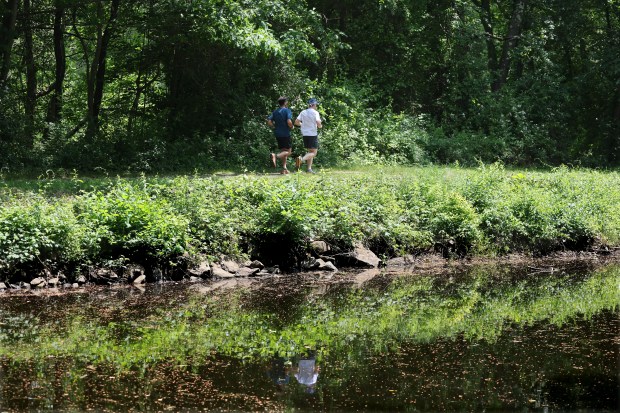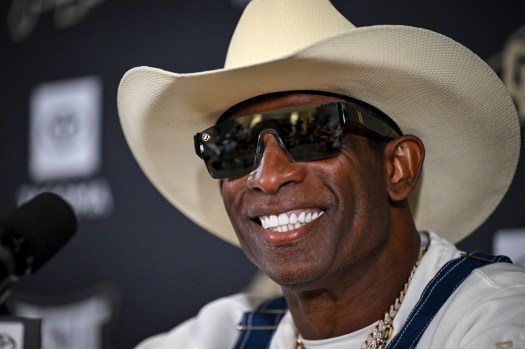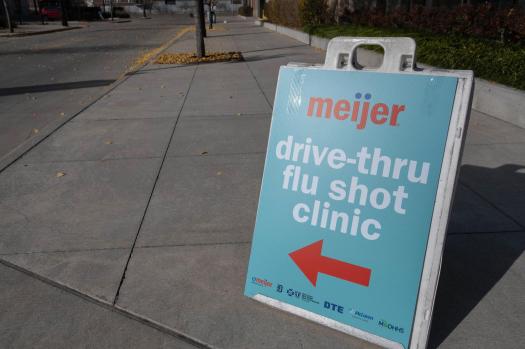Every mile has a tale to tell, and Patrick McEnaney is pursuing one that will live in memory.
Along with his own goal of finishing the Western States 100-Mile Endurance Run (WSER), he also bears the burden of those who are supporting him and the memories of those who are unable to do so.
According to McEnaney, I want to be able to tell them that I’m done and share with them the amazing tale of how I got from point A to point B and all the stories that came before and after.
McEnaney will compete in WSER, the oldest 100-mile footrace in the world, on Saturday. He will not be working alone. In memory of his late brothers, Kevin and Daniel, who both committed suicide, the 52-year-old Mendon resident and surgeon at UMass Memorial Health-Milford Regional Medical Center is running. His run will benefit SOS Signs of Suicide, an evidence-based suicide prevention program that Riverside Community Care has deployed in thousands of schools nationwide, and Riverside Community Care.
From California’s Olympic Valley to the tiny Gold Rush settlement of Auburn, the race covers 100 miles on the Western States Trail. Its origins, along with its renowned belt buckle finisher medal, may be traced back to the Tevis Cup, an endurance horse race. WSER is not a feat for ordinary people, as it involves climbing 18,000 feet, often through knee-deep snow, and descending over 23,000 feet into flaming gorges with temperatures as high as 120 degrees.
However, the majority of its competitors are just like that.
First goal: complete. The second goal is to complete in less than twenty-four hours. “And we’ll see,” McEnaney continues, “I’ve only done that once.” McEnaney has participated in other 100-mile races, such as the Midstate Massive Ultra Trail in New England, but only one in less than 24 hours after an injury forced him to switch from brutal road running to softer, more forgiving trails.
Making my brothers proud is one of my main motivations, McEnaney says.
McEnaney, who privately processes his grief with every step on his hours-long excursions, has personal experience with the harm caused by the stigma and secrecy surrounding suicide—a subject that the SOS Signs of Suicide program aims to address.
He claims that the program removes the stigma and puts it out of the closet. I was astounded by the slideshow they showed me, which allowed me to witness some of this personally. I wish there had been such a thing when I was twelve.
95% of schools reported feeling that there was less stigma associated with mental health among students after providing SOS to their pupils, and the program has been demonstrated to reduce suicide attempts by 64%. Additionally, they thought that pupils were taught to recognize the warning signs of despair and suicide. The main goal of the program is to provide kids the skills and techniques they need to recognize, care for, and confide in a trusted adult about their own or a friend’s struggles. According to Larry Berkowitz, co-founder and senior clinical consultant at Riverside Trauma Center, there is such a stigma associated with mental health and suicide that discussing it will make people more likely to consider suicide. There’s a misconception that children can’t tolerate being upset. However, the goal here is to save lives.
Although there will be some well-known ultrarunning stars in this year’s race, such as Killian Jornet of Spain and Fu-Zhao Xiang of China, the main attraction is that ordinary people, including retirees, school teachers, and surgeons, can enter the lottery and, if chosen, start from the same starting line as the sport’s greatest athletes. Participants in this year’s competition will range in age from 24 to 80.
A maximum of 369 runners are permitted to begin the event each year. Because of the race’s environmental impact on the trails across the Sierra Nevada mountains, the U.S. Forest Service established that very exact number as a restriction. Furthermore, even if ultrarunners associate WSER with the Masters or the Super Bowl, the race and the sport itself are still quite specialized.
Though the distances begin at 50 kilometers (31.1 miles) and progress through 50 miles, 100 kilometers (62.1 miles), and 100 miles, they swiftly reach mind-blowing lengths like this year’s inaugural Arizona Monster, a 300-mile race that crosses the Grand Canyon State. Officially, any distance longer than a marathon can be categorized as an ultramarathon.
In addition to the challenge of walking 100 miles, competitors at this year’s WSER will also have to contend with temperature fluctuations, with temperatures reaching 90 degrees Fahrenheit on ruthlessly exposed fire roads and freezing temperatures at 9,000 feet. In order to cross the American River, runners will need to drag themselves across waist-deep water with a rope. This struggle of will and attrition is further complicated by the impending arrival of bears, mountain lions, rattlesnakes, poison oak, and a runner’s capacity (or lack thereof) to stay on course.
McEnaney put in up to 17 hours per week of training in the run-up to the marathon, covering over 100 miles. Additionally, McEnaney has his nutrition, salt intake, and hydration down to a science, even though the unpredictable weather and terrain of endurance events make it difficult to duplicate race strategy. The steepness of the Sierras cannot be replicated locally, so McEnaney developed his mountain-running skills on Mount Wachusett. He used alternate sauna and jogging sessions to complete his heat training.
He claims that running is his medicine and form of therapy. Engaging in physical activity outside is a means of achieving mental calm.
McEnaney has raised over $100,000 for Riverside in the past through his efforts. In order to continue honoring his brothers, he is now hoping to donate an additional $50,000 to the cause.
It’s not about me. Helping those who are at danger of suicide and ensuring that they have the resources to do so are the goals here. According to McEnaney, that is the most crucial factor. I entered the Western States. Did I have to raise money? No. But it’s incredibly difficult for me. It almost seems self-serving to me to sit there, spend time away from my family, and endure all the training required to accomplish this without reaping any benefits.
McEnaney is more than halfway to his fundraising target, so good things have been on the way. He just needs to run 100 miles now.
- The 988 Suicide and Crisis Lifeline is a hotline for individuals in crisis or for those looking to help someone else. To speak with a trained listener, call 988.
- The Veterans Crisis Line connects veterans and service members in crisis and their families and friends with qualified, caring U.S. Department of Veterans Affairs responders through a confidential hotline, online chat, or text. Dial 988 and Press 1 or visit veterancrisisline.net for crisis chat services and more information.
- Crisis Text Line is a texting service for emotional crisis support. To speak with a trained listener, text HELLO to 741741. It is free, available 24/7, and confidential.









